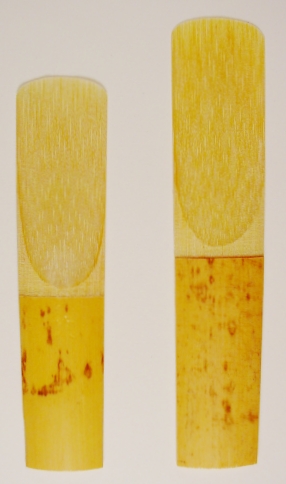Woodwind instrument facts for kids
Woodwind instruments are a group of musical instruments. They are part of the larger family of wind instruments. Some common woodwind instruments are the flute, clarinet, oboe, saxophone, and bassoon.
There are two main kinds of woodwind instruments: flutes and reed instruments. The big difference between woodwinds and other wind instruments is how they make sound. All woodwinds make sound by splitting air on a sharp edge. This edge can be a reed or a fipple.
Even though they are called "woodwinds," these instruments are not always made of wood. They can be made from many materials. Common materials include brass, silver, cane, gold, and platinum. For example, the saxophone is made of brass. But it is a woodwind because it needs a reed to make sound. Sometimes, woodwinds are even made from earth materials, like the ocarina.
Contents
How Woodwind Instruments Make Sound
Woodwind instruments are played in different ways.
- The flute is played by blowing air across a hole. It's like blowing across the top of an empty bottle.
- The oboe and bassoon use a double reed. This is like blowing air through a drinking straw.
- Bagpipes have double reeds hidden inside their mouthpiece.
- The clarinet and saxophone use a single reed. This reed is held against the mouthpiece opening.
Brass instruments, like trumpets, are played differently. You blow air against a cup-shaped mouthpiece. This is why a saxophone is a woodwind, even though it is made of brass. It uses a reed, not a cup-shaped mouthpiece.
The way a player shapes their mouth to blow an instrument is called the "embouchure." Woodwind instruments use several different embouchures.
In an orchestra, woodwind instruments often play short solos. The main player of that instrument usually plays these solos.
Exploring Flutes

Flutes make sound by directing a stream of air. This air goes across the edge of a hole in a tube. The flute family has two main types: open flutes and closed flutes.
Open Flutes
To make sound with an open flute, the player blows air across a sharp edge. This edge splits the air. The split air then makes the air inside the flute vibrate. This vibration creates the sound.
Examples of open flutes are the transverse flute, panpipes, and shakuhachi. Old flutes were often made from plants. These included grasses, reeds, or hollow tree branches. Later, flutes were made of metals like tin, copper, or bronze. Today, many concert flutes are made of special metal alloys. These often contain nickel, silver, copper, or gold.
Closed Flutes
To make sound with a closed flute, the player blows air into a special channel. This channel guides the air to a sharp edge. Just like with open flutes, the air splits. This makes the air inside the closed flute vibrate and produce sound.
Examples of closed flutes include the recorder, ocarina, and organ pipes.
Understanding Reed Instruments
Reed instruments make sound by blowing air into a mouthpiece. This causes a reed (or reeds) to vibrate. Like flutes, reed instruments are also divided into two types: single reed and double reed.
Single-Reed Instruments
Single-reed woodwinds make sound by attaching a reed to the mouthpiece opening. They use a ligature to hold it in place. When air is blown between the reed and the mouthpiece, the reed vibrates. This makes the air inside the instrument vibrate and create its unique sound.
Single-reed instruments include the clarinet, saxophone, and others like the chalumeau.
Double-Reed Instruments
Double-reed instruments use two small, carefully cut pieces of cane. These pieces are tied together at the bottom. People think this way of making sound started a very long time ago. It might have been discovered by watching wind blow through a split plant stem.
The finished reed is put into the instrument. It vibrates when air is blown between the two pieces. This also makes the air inside the instrument vibrate. This family of reed instruments has two more types: exposed double reed and capped double reed instruments.
Exposed Double-Reed Instruments
Exposed double-reed instruments are played by putting the double reed directly between the player's lips. This group includes instruments like the oboe, cor anglais (also called English horn), bassoon, and many types of shawms from around the world.
Capped Double-Reed Instruments
Capped double-reed instruments have the double reed covered by a cap. The player blows through a hole in this cap. This directs the air through the reeds. The crumhorn is an example of this type of instrument.
Bagpipes are special reed instruments. They use two or more double or single reeds. But bagpipes work like capped double-reed instruments. This is because the reeds never touch the player's lips directly.
Free reed aerophone instruments are also unique. They make sound using "free reeds." These are small metal pieces arranged in rows inside a frame. The air needed for these instruments comes from the player's breath (like a harmonica) or from bellows (like an accordion).
Woodwinds in Bands and Orchestras
In a modern orchestra, the woodwind section usually has flutes, oboes, clarinets, and bassoons. Other woodwind instruments are often added. These include the piccolo, cor anglais, bass clarinet, E-flat clarinet, and contrabassoon. Sometimes, saxophones are also included.
The woodwind section in a concert band is usually much bigger. It has piccolos, flutes, oboes, B♭ clarinets, bass clarinets, bassoons, alto saxophones, tenor saxophones, and baritone saxophones. Other instruments like the alto flute, cor anglais, E♭ clarinet, alto clarinet, contra-alto clarinet, contrabass clarinet, contrabassoon, and soprano saxophone are also used, but less often.
See also
 In Spanish: Instrumento de viento-madera para niños
In Spanish: Instrumento de viento-madera para niños


